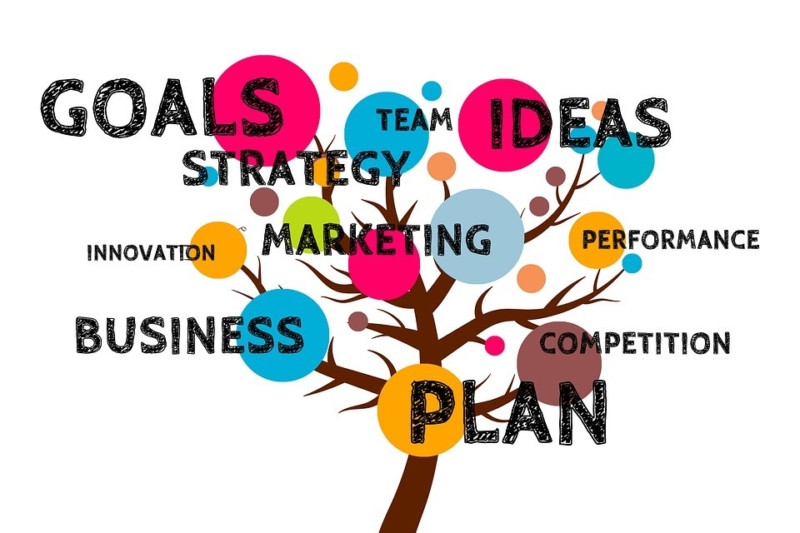Perhaps the most significant part of building a business is at the very beginning of the journey. Many CEOs remember the Eureka! moment when their grand idea was born. The next step is making a 5-10-year business plan or vision for the new business. How many businesses changed dramatically from the initial blueprint? More than a few, one would imagine!
Before business leaders put together their first grand 10-year plan, they have a clear vision of what type of employees to hire; their business’s ideal ethics and values; and the unique selling point that will attract millions of customers from across the country; and if their dream is big enough, customers from around the globe.
In this ultra-competitive climate, companies jostle to attract returning and new customers. In this fast-moving world of evolving markets where innovations seemingly appear daily, some businesses are ahead of the race, and some companies run out of fuel trying to catch-up. For every business experiencing growth, it is imperative to not lose what made them great in the first place.

Is the increasing trend of “Hypergrowth” good for business?
According to Jordana Valencia writing for Harvard Business Review, over the past few years, there has been a noticeable upsurge of hypergrowth companies, globally.
- What do we mean by hypergrowth companies?They are the companies that appear on the steep part of an S-curve graph. In simpler terms, these organizations or industries are experiencing explosive growth.
- What happens to businesses experiencing hypergrowth? When companies quickly expand their value climbs sharply. Companies experiencing hypergrowth have annual growth rates of (CAGR) at 40%+. Human capital also makes a quick accent, with more employees needed to support business growth.
To get a better idea of the concept of ‘hypergrowth’ imagine the rowers needed to support a medium-sized ship. Now picture this medium-sized ship growing to five-times the size. In order to run efficiently the now colossal vessel needs more rowers to maintain the ship. If there are not enough, all the ship’s systems will fail; the predictable result is a sinking ship.
The analogy is clear, if a company does not have the right people or systems in place to support business rapid growth, the organization will quickly fall apart.

The importance of core values to business
Core values are the guiding beliefs you use to conduct your business. Many companies share the same core values: honesty, integrity, respect. These are excellent values all businesses should incorporate. In order to separate your version from others, you need to be specific and put your own unique spin on them. CEO and Founder at Advantages, Fran Biderman-Gross writing for Forbes says companies often confuse values with “concepts they [values] are related to, but not identical to.” Values don’t describe your business or what you do, that is your mission. Values guide your mission, but they are not the strategies you use to accomplish your mission.
What are the ideal values of your organization? They are your organization’s core essential values or ideas that remain unchanged; rules that your organization lives by. They also act as beacons directing a company to fulfill its purpose. As Biderman-Gross beautifully expresses it, “values are a meaningful answer to how you do what you do.”
Fran Biderman-Gross makes the following recommendations on how companies can live by and develop a value system:
- Establishing your core values: There is no question that honesty and integrity should be an integral part of any business; however, companies need their own set of values that make them easily identifiable from similar businesses.
- Put your values into your own words: Many companies say they value honesty, integrity, and respect, but this is not enough. Rather than an organization saying they value courageousness, say it in a different way such as Facebook that “demands their employees be bold.” Values need to be communicated in a unique voice that will not only guide company conduct but also engage new and returning customers. A strong set of unique values tends to stick in a customer’s mind.
- Don’t choose aspirational values, implement authentic values: A company’s values should not be aspirational. It is far better to retain authenticity. Values should not communicate what a business aims to improve or lacks, companies need to embody the morals they expound.
Think of values as a part of your organization identity, “not a future ideal.”
Scaling does not just mean bigger, it should mean better
David Nast writing for Raconteur argues scaling does not just mean bigger, but better. Nast uses the company Ferrari as an example. Nast explains that every model since Ferrari started in the late ‘40s embodies unique identity; characteristics that differentiate it from any other motor vehicle across the globe. In the last decade, Ferrari has rapidly grown as a company, boosting its production and sales by maintaining its individuality, but at the same time, enhancing its excellence. “Every model is handmade by artisans.” They create cars not just to drive, but to experience.
Having great equipment and technology can help a business to scale rapidly but too quickly can also result in poor scaling. Nast says, “That speed must be balanced with precision, or quality suffers.” Rapid growth often suffocates innovation, and the business may lose its uniqueness.
Growth is as much about the plan as the people that put it into action. Businesses need to be aware of how important their people are to their growth plan. Making the right hiring choices is not only an integral part of the growth process; it is what makes a business succeed.
Can a company be profitable without the help of a great team of people?

Why balance is essential to not losing what makes you great
No matter where you are on your business journey, there are essential tools needed to build your dream company. The starting point is the ability to communicate your company’s values in a way that attracts customers. Each one of us, have unique talents, abilities, and values that we bring wherever life takes us.
Many companies focus their vision on integrity and honesty, but are these values enough to make them unique? How will their voice or brand speak to their customers in a way that makes them stand out in an overcrowded marketplace?
Is bigger necessarily better? That is the question business leaders need to ask themselves. You may have all the new bells and whistles, but will those stagnate or help your growth? To accomplish effective long-term growth, there needs to be a “balance of speed with precision” or quality falls.
The most important factor is hiring and retaining the right people for the right jobs because without your team onboard, it is highly unlikely your vision for growth will get off the ground.
Great people make great companies.






